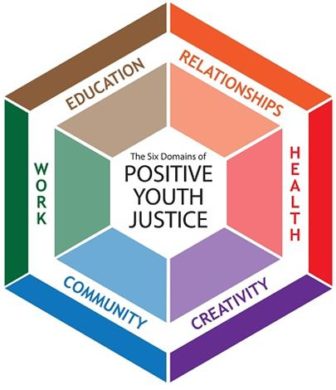 “Collaborating for Successful Reentry: A Practical Guide to Support Justice-Involved Young People Returning to the Community” from the Center on Juvenile and Criminal Justice is a resource to help practitioners reform how youth reenter society and connect with their community. Traditionally, the justice system has used remedies that require youth to go to several classes, complete community service and have frequent meetings with different case managers. This system of reentry can be overwhelming when added on top of readjusting to school, social, and family life.
“Collaborating for Successful Reentry: A Practical Guide to Support Justice-Involved Young People Returning to the Community” from the Center on Juvenile and Criminal Justice is a resource to help practitioners reform how youth reenter society and connect with their community. Traditionally, the justice system has used remedies that require youth to go to several classes, complete community service and have frequent meetings with different case managers. This system of reentry can be overwhelming when added on top of readjusting to school, social, and family life.
The report stresses that there should be a more streamlined reporting system for youth when reentering their community. Having one point of contact instead of various individuals to report to helps build a bond between practitioner and youth. Along with reducing the number of people youth must report to, programs that youth are involved in should be community-based and culturally/gender responsive. Using the community as a resource in the reentry process means that youth will be reintegrating into a place they are familiar with and that helps promote collaboration among the youth, their family and the practitioner.
Case managers should confirm that the youth’s basic needs are being met before expecting them to begin community service, mandatory classes or any other cognitive-behavioral interventions. Once the youth’s needs are met and rehabilitative measures start, practitioners should shift to a strength-focused lens of working with youth. Using the strengths that youth already possess, allows them to practice and further build their unique skills. Research has shown that focusing and practicing a skill has the most significant impact on reducing future criminal behavior; however, it is important to remember that interventions will have little effect if the youth’s needs are not being met.
Once the basic needs of youth are met, the guide identifies seven areas of need to focus on through the strengths-based frame: housing, financial wellness, education, employment, social-emotional, mental health and legal matters. The guide explores:
Anatomy of each need/ problem
Types of support that may be used for the need
Potential outcomes of the support systems
Examples of successful reentry programs for each need/ problem.
There are many potential adverse outcomes from involvement in the juvenile justice system, but youth reentering society can use their unique strengths, talents and passions to help their reintegration be more individualized and rewarding. Having a supportive case manager, community programs that are relevant to the youth and goals that emphasize the strengths of the youth can help set them up for success during reentry.
Read the full report here.
I love the website